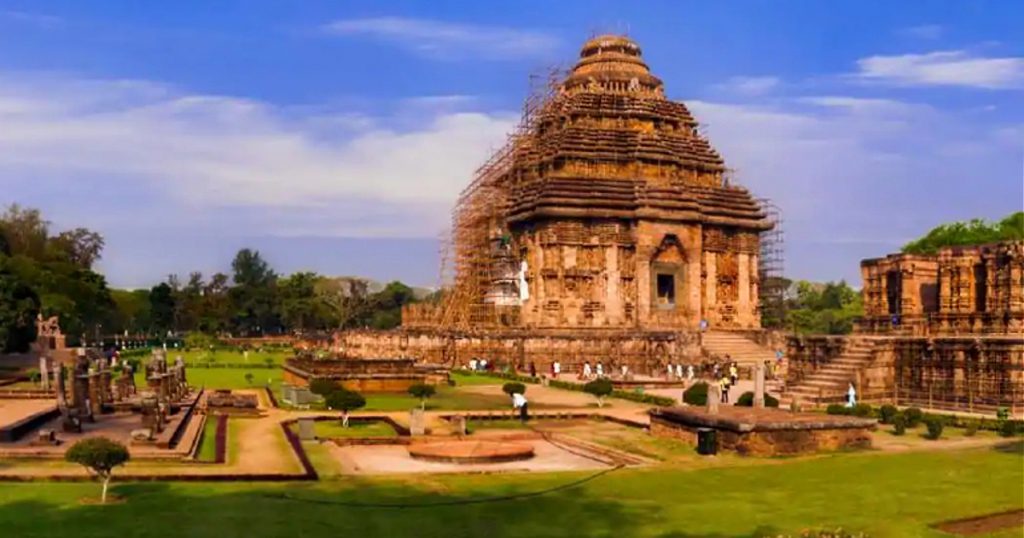Today on 1st April, when Odisha Day is celebrated by the state and the Odia community everywhere, it is propitious to make an introspection of the Odia identity. Thanks to the presiding deity of Odisha Lord Jagannath, the temporal and the spiritual Lord is now universally worshiped. Perhaps there is no major city in the world or for that matter no major towns in India where there is no temple of Lord Jagannath. If Jagannath is the iconic deity of the state, whose following is now spreading the world over, the intricate and yet expressive Odissi dance is the hallmark of the culture of the state. The exquisite Sambalpuri saree in its various shades of colours is the fashion statement with its niche clientele among the intelligentsia and the intellectuals. The silver filigree works of Odisha is yet another sought after gift items for the guests and visitors from home and abroad. The Odia pride received yet another accolade when the Union Cabinet recognised Odia as one of the chosen six classical languages of India along with Tamil, Sanskrit, Kannada, Telugu and Malayalam in February 2014. This is a vindication of the rich cultural and linguistic heritage of the state.
Is it possible to typecast an average Odia in terms of common traits? Now that they are ubiquitous all over the country, is it possible to profile them with some common characteristics or attributes? The honest answer will be perhaps a subdued ‘no’. I being an Odia, my impression of Odia identity will tend to be biased and prejudiced. Still at the risk of being ridiculed let me make an attempt to profile the identity of an average Odia. Be that as it may, like any other community the Odias are a heterogeneous group. In Delhi if you call a plumber, more often than not, you will find him to be an Odia. No one really knows how they have mastered this hydro engineering. Is it a tradition with them or endemic to the region? Move a step ahead in the social ladder, you will find them as office boy or as an office assistant in corporate houses, small or big. As job opportunities are not plenty in Odisha, educated Odias migrate to different parts of the country and also abroad for a livelihood. Their intelligence, honesty, sincerity and hard work impress owners of companies, who employ them in different capacities. Still one notch higher in the ladder you will find them in the labyrinthine of Delhi’s Bhabans – Krshi Bhaban, Sashtri Bhaban to Rail Bhaban – working as Section officers or under secretaries enjoying the absolute confidence of their IAS bosses, many of them by chance could be Odias. Incidentally, currently there are about a dozen Odia secretary-level officers either from Odisha cadre of the IAS or from other state cadres of the Civil Service.
Thus the identity of the state and its people has been evolving in recent times and there has been a churning of socio-economic and political processes of the state and its people which is not very different from other states of the country. They have, it seems, woken up from the slumber of the past. Incidentally it may be mentioned that the then BBC correspondent in India Daniel Lak on a visit to the state capital Bhubaneswar some year’s back described the state as ‘siesta country’, in one of his regular columns in India Today, when he found shops closed in the afternoon in order to enable owners to take a nap. The laid-back attitude of the people and their homesickness have now given way to upward mobility, particularly in niche service sector both in government and private sectors vertically and horizontally. While taking up a secured government job has always been a sought after career opportunity for an average Odia, quite a few have been successful at the elite civil services examinations. Through sheer hard work, honesty and diligence some of them have distinguished themselves and have come to occupy top echelons of government bureaucracy. How does one explain the craze of an average middle class or lower middle class Odias for the Civil Services? The reason is not far to seek. Firstly, it is the lack of other avenues of career such as engineering which, however, has improved in last few years. Secondly, lack of resources to pursue such an expensive career option and finally the low levels of socio- economic development. The Civil Service thus becomes the easy catchment area for bright middle class Odias. The gain of Civil Service is sometimes a loss to other challenging vocations such as industry, entrepreneurship and creative field. Given their innate intelligence and drive this category of people can simply do marvelously in other areas of human endeavor including teaching and research. What has happened is that some of these bright youngsters after their success at the covetous examinations, with a few exceptions, shrink to low abyss of lethargy, mediocrity, and indolence, sometimes ignominy of suspension and dismissal.
In spite of some aberrations, however, the state in recent past has produced some of finest achievers in diverse fields ranging from politics to poetry. Quite a few well-meaning politicians from the state have made their mark in Parliament. While the Chief Minister Nabin Patnaik, the illustrious son the indomitable Biju Patnaik carved out a niche for himself as a suave and astute politician holding his head high among his peers,
It is time now to have many more Ritesh Aggarwal of Oyo fame, Dutee Chand, the Olympian, or Sudarshan Pattnaik, the internationally-acclaimed sand artist, to create a new Odisha, second to none to uphold the name and fame of iconic figures like Madhusudan Das, Subash Chandra Bose or the legendary Biju Patnaik.
The writer is a Delhi-based scholar and writer. Views are personal.
